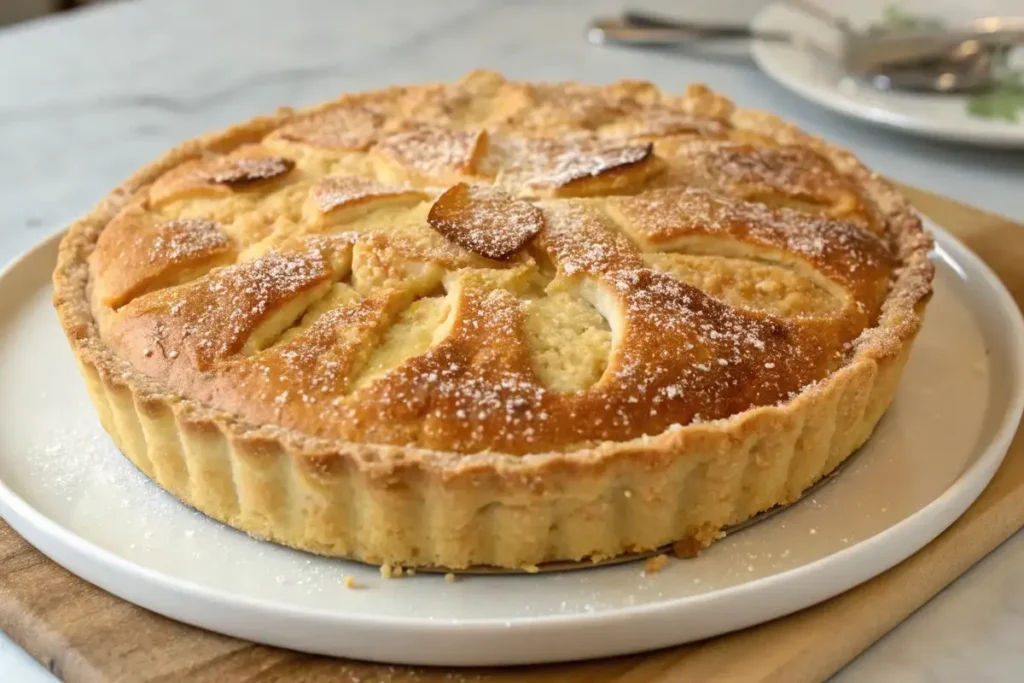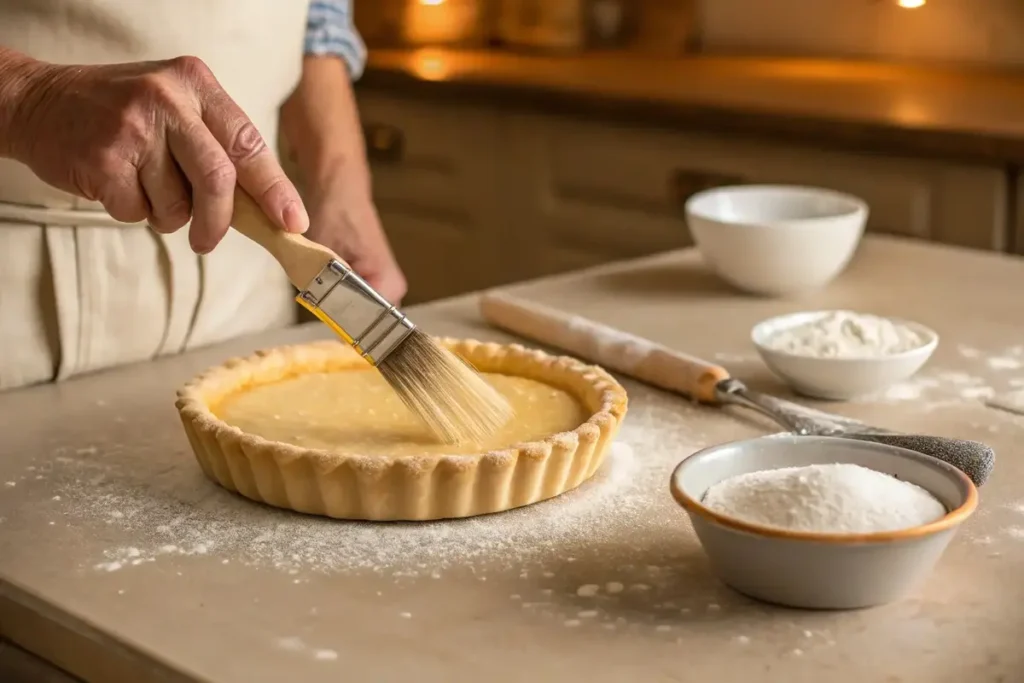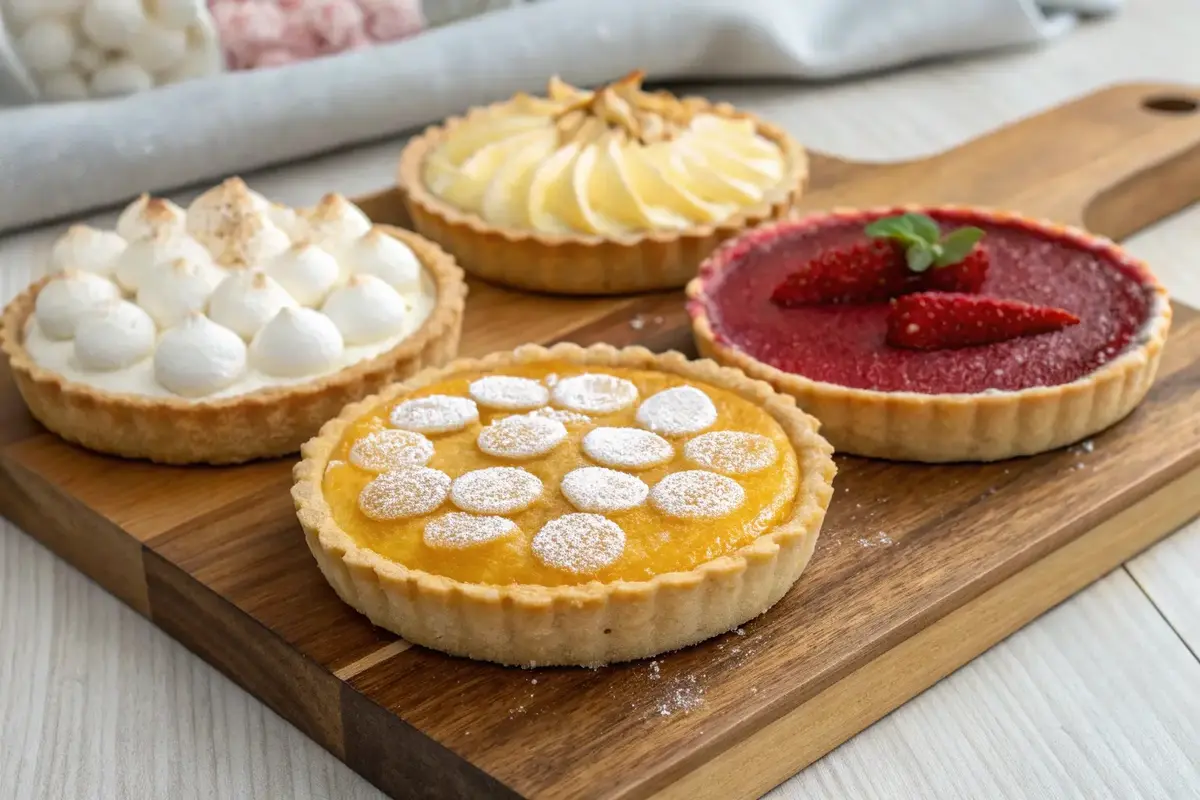Introduction
Pie lovers often marvel at the beautiful, sparkling crusts that adorn their favorite desserts. Whether it’s the rustic charm of a fruit pie or the glossy appeal of a custard pie, sugar toppings can elevate both the appearance and flavor of your bakes. In this article, we’ll explore what sugar is used on top of pies, the types of sugar best suited for various pies, and how to apply them for perfect results. Let’s dive in to discover the sweet secrets behind picture-perfect pies.
Understanding Sugar Toppings on Pies
Importance of Sugar Toppings in Baking
When it comes to pie perfection, sugar toppings are more than just eye candy—they’re a multi-functional ingredient that enhances flavor, texture, and presentation. The crunchy texture created by sugar adds an inviting contrast to the tender pie crust, while the subtle sweetness complements both savory and sweet fillings. Additionally, sugar caramelizes during baking, creating that golden-brown finish bakers and eaters alike love.
Using the right sugar on top of your pie can also elevate its appearance. Sanding sugar, for instance, adds a festive sparkle, while turbinado sugar lends a rustic, natural charm. Whatever the occasion, sugar toppings make your pie the centerpiece of any table.
Overview of Common Sugars Used
Not all sugars are created equal, especially when it comes to pie toppings. Some sugars perform better than others under the high heat of the oven. For example:
- Granulated Sugar: A common choice for a subtle, everyday shine.
- Turbinado Sugar: Known for its coarse texture and rich flavor.
- Sanding Sugar: Often used for decorative sparkle.
- Demerara Sugar: Adds depth with its molasses-like flavor.
- Pearl Sugar: A specialty sugar for a crunchy, striking finish.
Choosing the best sugar for your pie depends on the flavor profile, texture, and aesthetic you’re aiming for. As we explore the specifics in later sections, you’ll gain insights into how to pick the perfect sugar for your baking needs.
Types of Sugar Used on Top of Pies
Granulated Sugar
Characteristics and Uses
Granulated sugar is the most familiar and widely used sugar in baking. It’s fine, white, and easily accessible, making it a go-to choice for many home bakers. This sugar provides a light sweetness and creates a delicate crunch on the surface of pies when baked. Because of its fine granules, it caramelizes quickly, adding a subtle shine and golden hue to the crust.
Granulated sugar is versatile, making it ideal for all kinds of pies, from fruity creations to nut-based delights. While it doesn’t have the dramatic texture of coarser sugars, it blends seamlessly into the overall pie aesthetic.
Application Techniques
Applying granulated sugar is straightforward. Before baking, lightly brush your pie crust with an egg wash or milk to create a sticky surface. Sprinkle an even layer of sugar over the crust using your fingers or a small sieve. This ensures a uniform coating, which results in an even caramelized finish.

Turbinado Sugar
Characteristics and Uses
Turbinado sugar, often referred to as “raw sugar,” boasts a coarse texture and light brown color. Its mild molasses flavorand larger crystals make it a favorite for pies where you want a rustic appearance and a satisfying crunch. The coarse granules retain their shape even under high heat, creating a visually appealing texture that pairs wonderfully with hearty fruit pies, like apple or peach.
Turbinado sugar is less refined than granulated sugar, making it a great option for bakers seeking a more natural ingredient. Its slight molasses undertones also enhance the flavor of the crust without overwhelming the pie filling.
Application Techniques
To use turbinado sugar, start by brushing the unbaked crust with an egg wash to help the sugar adhere. Because its granules are larger, sprinkling too much can result in an uneven surface, so use a light hand. Sprinkle the sugar directly onto the crust, focusing on the edges for an eye-catching border. For extra crunch, you can add a second layer after the first application has slightly set.
Demerara Sugar
Characteristics and Uses
Demerara sugar is a cousin to turbinado sugar, sharing its large crystals and golden-brown color. However, demerara sugar has a slightly darker hue and a stronger molasses flavor. It’s less processed, making it another excellent choice for bakers who prefer minimally refined ingredients.
Demerara sugar is ideal for creating a rich, caramelized topping on pies, particularly those with creamy or spiced fillings like pumpkin or pecan. Its granules add a distinctive crunch and visual interest, especially when used on the pie edges or lattice tops.
Application Techniques
Similar to turbinado sugar, demerara sugar requires an adhesive layer like egg wash or melted butter. Gently press the sugar into the crust with your fingers to ensure it sticks well. Be mindful of the sugar amount to prevent an overly crunchy texture. Additionally, avoid applying too close to the pie center, as it may melt into the filling.
Sanding Sugar
Characteristics and Uses
Sanding sugar is a baker’s favorite for decorative purposes. This sugar comes in various colors and has medium-sized crystals that reflect light, giving pies a sparkling finish. Unlike granulated or raw sugars, sanding sugar is purely aesthetic, often used on pies for special occasions or holidays.
Since sanding sugar doesn’t melt easily under heat, it maintains its original texture and color, making it ideal for creating vibrant, festive pie designs. It’s particularly popular for lattice-topped pies or edges with intricate cutouts.
Application Techniques
For best results, sanding sugar should be applied to unbaked pie crusts. Use a thin layer of egg wash to help the sugar stick. If you’re aiming for a color gradient effect, try layering different shades of sanding sugar on various parts of the crust. Be generous with the sugar, as its vibrant appearance is the highlight of this type of topping.
Pearl Sugar
Characteristics and Uses
Pearl sugar is distinct due to its large, white, non-melting chunks. Known for its crunchy texture and striking visual appeal, pearl sugar is typically used in European-style desserts but works wonderfully on pies as well. Its neutral flavor enhances sweet or savory pies without competing with other ingredients.
Pearl sugar is perfect for rustic pies, adding a unique texture and visual interest. It’s less common in home baking but can be found in specialty baking stores or online.
Application Techniques
To use pearl sugar, scatter the chunks sparingly across the pie crust after applying an egg wash. Because of its size, pearl sugar works best on lattice or open-faced pies, where it can stand out visually. Avoid overloading the crust, as too much pearl sugar can weigh it down or lead to uneven browning.
Application Methods
Preparing the Pie Crust for Sugar Toppings
Egg Washes and Their Role
Egg washes serve as the glue that binds sugar to your pie crust. Without this layer, the sugar won’t adhere properly and may fall off during baking. Depending on your preference, you can use a whole egg, egg white, or egg yolk mixed with a tablespoon of water or milk. Each option yields a slightly different result, with yolks creating a richer golden color and whites offering a lighter shine.
Timing of Sugar Application
Timing is everything! Sugar should be applied right before the pie goes into the oven. This ensures it adheres properly and doesn’t dissolve prematurely. For particularly coarse sugars like turbinado or pearl sugar, press them lightly into the egg wash to secure their placement.
Techniques for Even Sugar Distribution
Tools and Tips
For uniform sugar coverage, use a fine mesh sieve or a sugar shaker for smaller granules like granulated or sanding sugar. For coarser sugars, use your hands or a spoon for better control. To avoid clumps, sprinkle from a height of about 6 inches, letting the sugar fall evenly across the crust.
Avoiding Common Mistakes
One common pitfall is using too much sugar, which can lead to overly sweet or burnt crusts. Always aim for a light, even coating. Additionally, don’t forget the edges of the pie, as these areas often get overlooked but play a significant role in presentation.
Effects of Sugar Toppings on Pie Appearance and Texture
Enhancing Visual Appeal
Creating a Caramelized Finish
One of the most striking effects of sugar toppings is the beautiful caramelized finish they create. When sugar melts in the oven’s heat, it transforms into a golden-brown glaze, adding an elegant touch to your pie. Sugars like granulated and turbinado are particularly effective for this, as they caramelize evenly and enhance the pie’s visual appeal. This process also introduces subtle, toasted flavors that complement a variety of fillings.
For bakers aiming for a dramatic finish, coarse sugars are ideal because their larger crystals retain their structure during baking, creating a glittering, rustic effect that immediately catches the eye.
Achieving Desired Color and Shine
The type of sugar you choose directly impacts your pie’s color and shine. While sanding sugar adds a sparkling effect, darker sugars like demerara lend a richer, amber hue to the crust. For the ultimate shine, use an egg wash before applying sugar, as it creates a glossy base that reflects light beautifully. Play with layering sugars to achieve unique patterns or gradients, perfect for special occasions.
Impact on Texture and Flavor
Adding Crunchiness
The crunch created by sugar toppings is not just pleasing to the palate; it also contrasts wonderfully with the soft interior of pies. Coarse sugars like turbinado and pearl sugar are renowned for their distinct texture, which stands out when sprinkled over flaky, buttery crusts. This textural contrast is a signature feature of well-topped pies.
Balancing Sweetness
Sugar toppings also play a vital role in balancing the overall flavor of your pie. The sweetness they add complements the tanginess of fruit fillings or the creaminess of custard, while darker sugars like demerara introduce molasses notes that enhance spiced or nut-based pies. By choosing the right sugar, you can achieve a perfectly harmonious flavor profile that satisfies every bite.

Choosing the Right Sugar for Different Pies
Fruit Pies
Recommended Sugars
Fruit pies, with their tangy and juicy fillings, benefit greatly from coarse sugars like turbinado or demerara. These sugars not only hold up well during baking but also add a delightful crunch that contrasts with the soft fruit filling. For a more subtle touch, granulated sugar works beautifully, creating a classic, understated finish.
Flavor Pairings
Choosing a sugar that complements the fruit filling is key. For berry pies, turbinado sugar’s mild molasses notes enhance the natural sweetness of the fruit. Similarly, apple or peach pies pair well with demerara sugar, which brings out warm, caramelized flavors. Experiment with sanding sugar for a sparkling, festive look, especially during holidays.
Custard and Cream Pies
Recommended Sugars
Custard and cream pies often have delicate, creamy textures, so lighter sugars like sanding or granulated are the best options. These sugars add subtle sweetness and a gentle crunch without overwhelming the filling. Sanding sugar is especially great for decorative purposes, as it doesn’t melt easily and maintains its sparkling appearance.
Flavor Pairings
To complement custard flavors, opt for neutral sugars like granulated, which won’t compete with the pie’s silky, rich taste. For vanilla or citrus custards, a light sprinkling of sanding sugar adds just enough sweetness to elevate the pie. If your pie features a caramel or chocolate cream, consider a touch of turbinado for added depth and texture.
Nut-Based Pies
Recommended Sugars
Nut-based pies, such as pecan or walnut pies, are rich and robust, making darker sugars like demerara or turbinado the ideal choices. These sugars provide a deep caramel flavor and a crunchy texture that complements the nuttiness of the filling. Their coarse granules also create an attractive rustic finish.
Flavor Pairings
The warm, earthy flavors of nut-based pies pair well with the molasses notes in turbinado or demerara sugars. For extra indulgence, try a mix of granulated and turbinado sugars to achieve a balance of sweetness and crunch. Sanding sugar can also be used sparingly for added sparkle, especially if the pie is served for a festive occasion.
Frequently Asked Questions (FAQs)
FAQs About Sugar Toppings on Pies
Can I use brown sugar on top of pies?
Yes, you can use brown sugar as a topping, though it’s not as common as other sugars like granulated or turbinado. Brown sugar’s moist texture can make it tricky to sprinkle evenly, and it may melt more quickly during baking, potentially creating a sticky surface. If you decide to use brown sugar, apply it sparingly and combine it with a dry sugar like sanding sugar for balance.
How can I prevent sugar from burning during baking?
Burnt sugar can ruin the flavor and appearance of your pie. To avoid this, monitor your oven temperature carefully and bake your pie on a lower rack to ensure even heat distribution. Additionally, coarse sugars like turbinado or sanding sugar are less likely to burn due to their structure. For delicate pies, consider loosely covering the crust with aluminum foil midway through baking to protect the sugar.
Is it necessary to use an egg wash before adding sugar?
While not mandatory, an egg wash is highly recommended for sugar toppings. It creates a sticky surface that helps the sugar adhere to the crust and enhances the final appearance by adding shine and color. If you prefer an alternative, milk or cream can also be used, though they may not produce the same glossy finish.
What is the difference between sanding sugar and granulated sugar?
Sanding sugar has larger, coarser crystals that reflect light, creating a sparkling effect, whereas granulated sugar is fine and melts more easily during baking. Sanding sugar is primarily decorative, maintaining its structure under heat, while granulated sugar provides a subtler finish and blends seamlessly into the crust.
Can I mix different types of sugar for a unique topping?
Absolutely! Mixing sugars like turbinado and sanding sugar allows you to combine texture, flavor, and appearance for a custom result. For instance, you can use sanding sugar for its sparkle and turbinado for its crunch. Experimenting with blends gives your pie a distinctive finish that stands out.
How do I store pies with sugar toppings to maintain their texture?
To preserve the texture of sugar-topped pies, store them in a cool, dry place. Avoid covering the pie tightly with plastic wrap, as this can trap moisture and dissolve the sugar. Instead, use a pie dome or loosely tent aluminum foil to protect the topping while allowing air circulation. If refrigerated, bring the pie to room temperature before serving to restore its original texture.
Conclusion
Mastering Sugar Toppings for Perfect Pies
Recap of Key Points
Sugar toppings play a crucial role in enhancing the flavor, texture, and presentation of pies. From granulated sugar’s delicate sweetness to turbinado’s rustic crunch, the choice of sugar can dramatically transform your baking results. Techniques like using egg washes and selecting the right sugar for specific pie types ensure a stunning, caramelized finish every time.
Encouragement to Experiment with Different Sugars
Baking is as much about creativity as it is about technique. Don’t hesitate to mix and match sugars, try different applications, or experiment with layering textures to discover your signature pie topping. With these tips in hand, you’re well-equipped to elevate any pie from simple to show-stopping. So, grab your favorite pie recipe, pick a sugar topping, and start baking your masterpiece!

